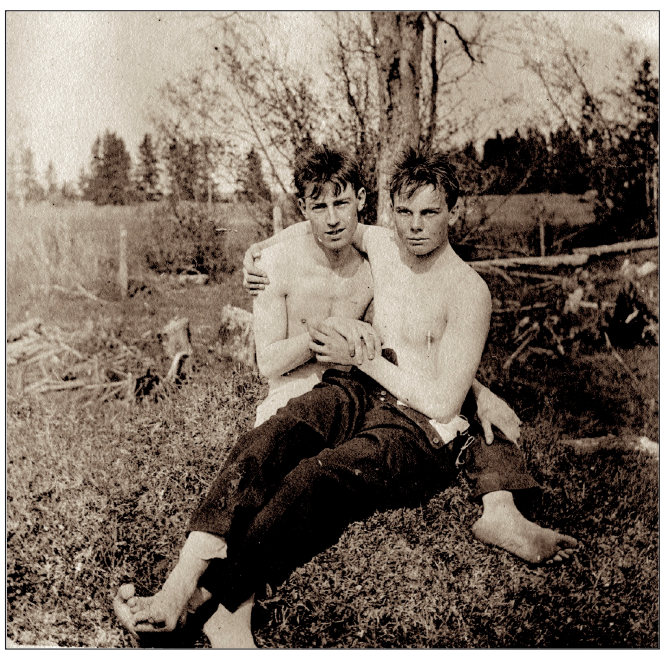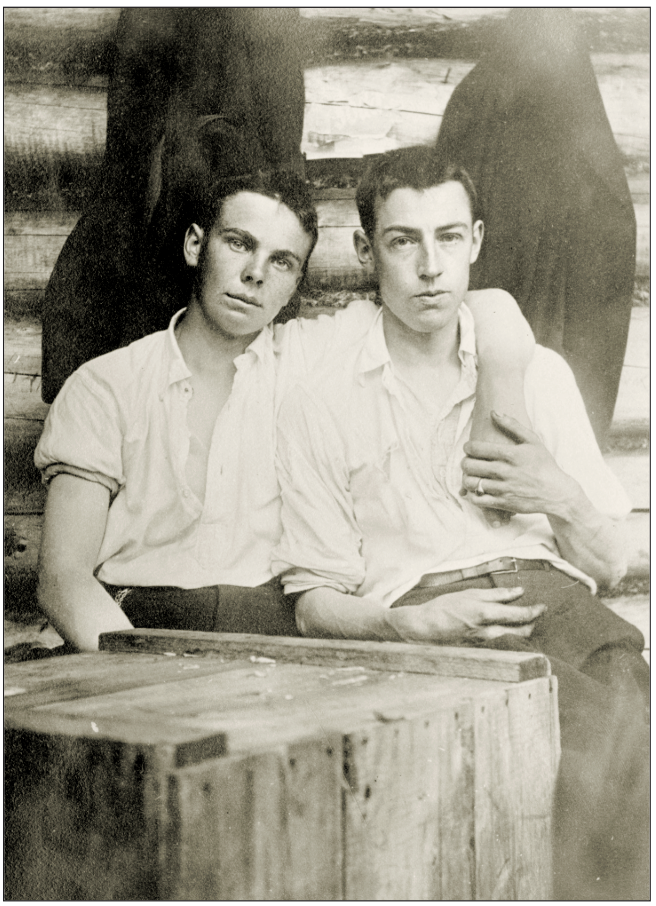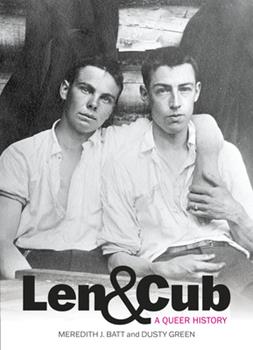UNLIKE TODAY, taking photographs in the past was a way to preserve the most treasured moments in one’s life. Before the smartphone made it possible to take pictures of what you ate for lunch, you had to be vigilant when choosing to press the shutter button to get the perfect shot lest it go to waste. Every photograph was ar-ranged not only to capture the moment but to tell a story about the subjects. In Len & Cub, authors Meredith J. Batt and Dusty Green have assembled a large number of photographs that tell the unfolding story of Leonard Olive Keith (1891–1950) and Joseph Austin Coates (1899–1965)—the “Len” and “Cub” of the book’s title.
Growing up together in Havelock, a rural town in New Brunswick, Canada, in the early 20th century, Len and Cub were the subjects of numerous photographs that were collected and saved and then later discovered by one John Corey. They’re now housed in the Provincial Archives of New Brunswick (PANB) thanks to Corey’s gift of the collection. Len was the amateur photographer who made a point of documenting their love affair from beginning to end. The photographs depict what is clearly an intimate relationship between two men at a time when homosexuality was illegal and condemned and usually hidden in the closet.

Batt and Green highlight features of some of the photos that provide clues about the depth of the two men’s commitment to one another. For example: “while it wasn’t uncommon for men to wear rings, [Len and Cub] are often seen wearing them together, usually on their ring fingers, and after his time with Cub, Len is not pictured with a ring again.”
Len was born in 1891 to an affluent family—his father owned a match factory and a gristmill—and was eight years older than Cub, who was raised on a nearby farm. On reaching their twenties, Len would go on to open and run a garage—his passions included both cars and photography—while Cub would buy a farm of his own.
Given the difficulty of taking photos in those days, as well as the taboo nature of their content, the question arises: how did these photographs come to be? Who’s snapping them, anyway? The authors offer a cursory explanation involving the technology of the day, which apparently allowed the subjects to take a “selfie” by means of a Kodak self-timing mechanism, which was available in 1917 or ’18. Photos from before that were presumably taken by siblings or friends.

These photos of Len and Cub belong to a genre that was beautifully illustrated in a recent documentary titled 100 Years of Men in Love: The Accidental Collection, which brings to light a wealth of vintage pictures of “men in love” from the 1850s to the 1950s. They were found at flea markets, in shoe boxes and old suitcases, in family archives, at estate sales, and so on, and were compiled in a book titled Loving: A Photographic History of Men in Love, 1850–1950, by Hugh Nini & Neal Treadwell. The 700-plus photos in this collection provide ample evidence for same-sex love over a long stretch of history, but most of the men pictured are nameless and shown in a brief moment in time, often without much context. In contrast, the photos of Len and Cub document a longer-term relationship involving two men whose biographies are fairly well known.
Still, nothing lasts forever, and it seems that adage would apply to Len and Cub. Apparently they drifted apart after World War II. Cub got married to a woman shortly before going off to fight and resumed family life upon his return. Less is known about what happened to Len, but there’s evidence that he was outed and ostracized from his village for being gay. Thus Len & Cub offers a glimpse into a relationship that was perhaps fated by the times to be short-lived.
Stephen Hemrick is the publisher of this magazine.






